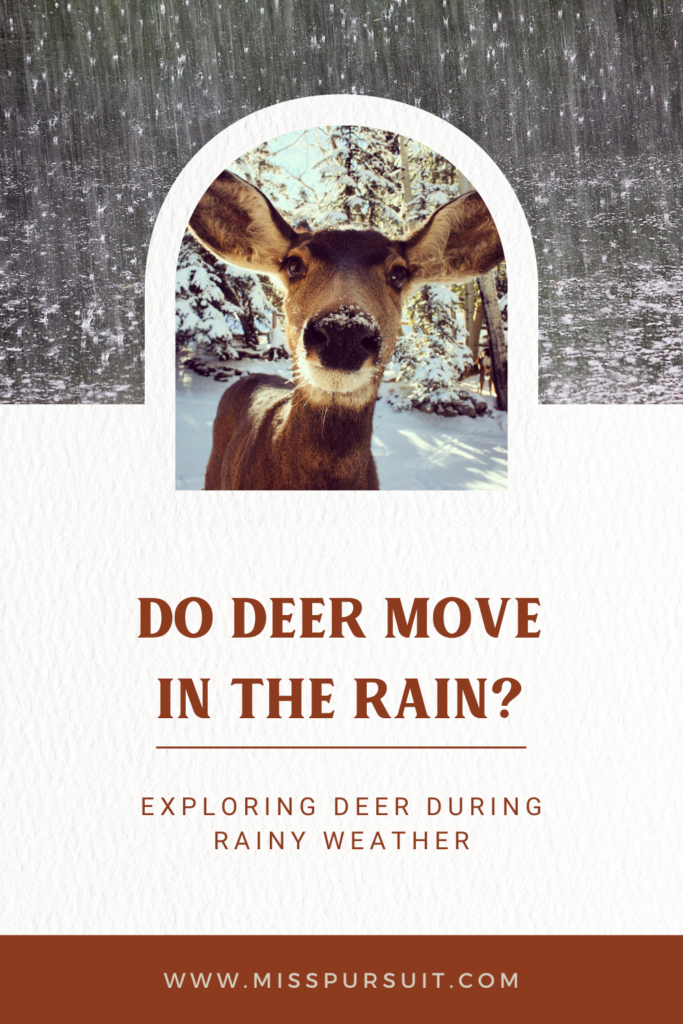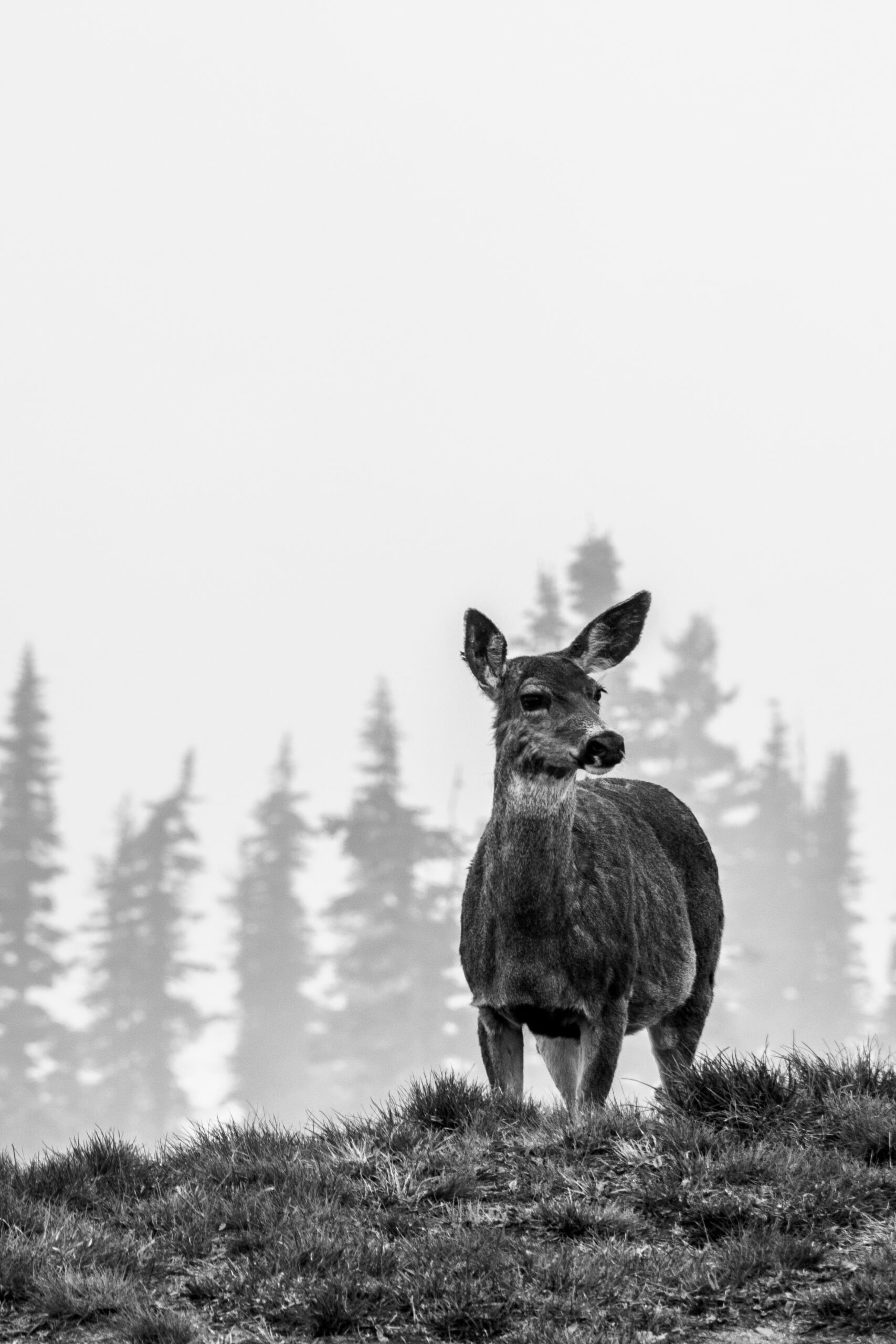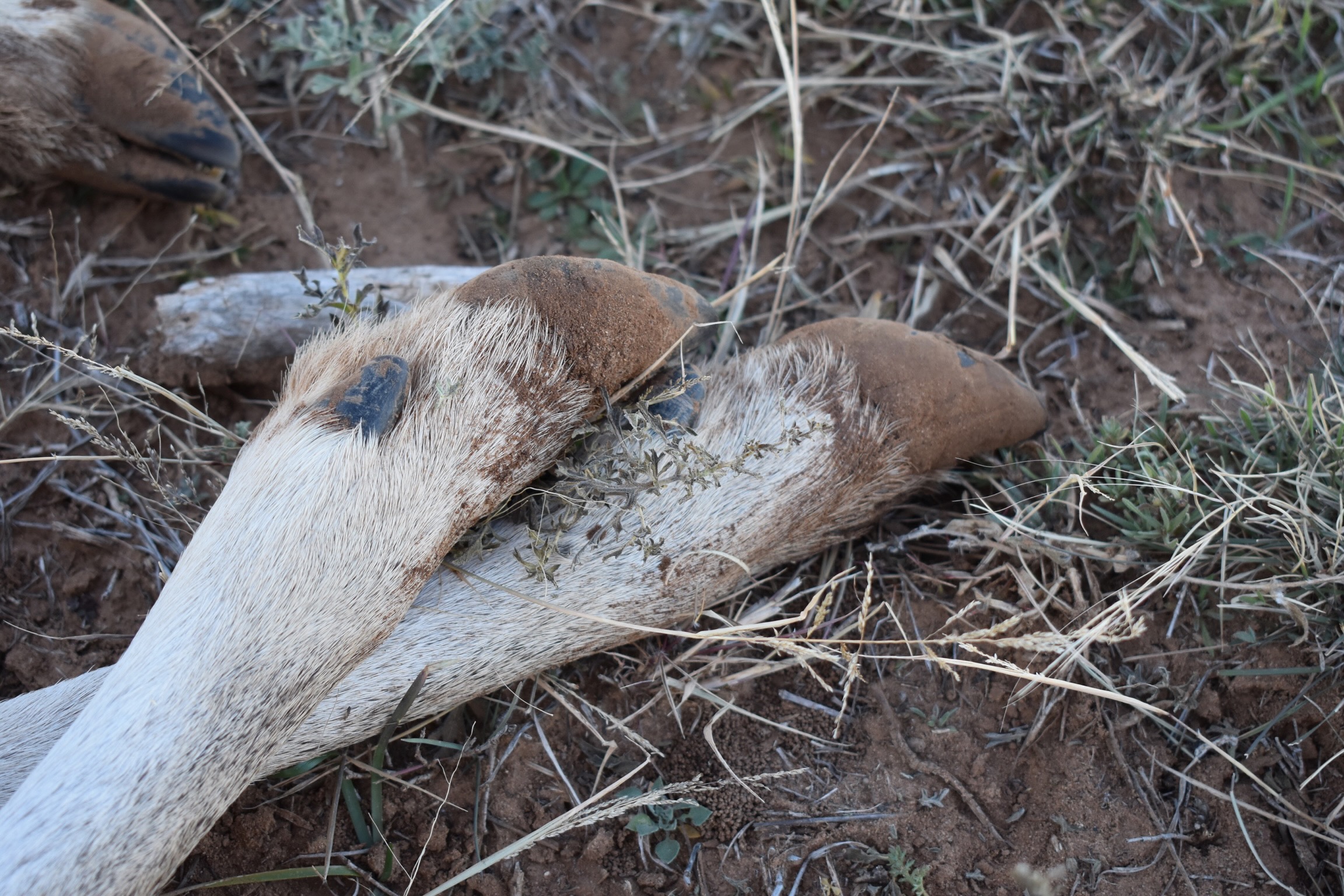Deer hunting is a popular pastime for many people, but it can be challenging to know when and where to hunt. One question that often arises is whether deer move in the rain. The answer is not straightforward, as there are many variables to consider. In this article, we will explore the topic of deer movement in the rain and provide insights into understanding deer behavior in various weather conditions.

Understanding deer behavior in the rain is crucial to predicting their movement patterns. Deer are creatures of habit and tend to stick to their established routines. However, weather conditions can significantly impact their behavior. Rain can make it more challenging for deer to hear and smell predators, so they may be more cautious and move less. On the other hand, rain can also make it easier for deer to move around undetected, as it muffles their footsteps and can wash away their scent. By understanding these factors, hunters can adapt their strategies to increase their chances of success.
Key Takeaways
- Deer behavior is influenced by weather conditions, including rain.
- Rain can make it more challenging for hunters to detect deer, but it can also make it easier for deer to move around undetected.
- Understanding deer behavior in various weather conditions is essential for adapting hunting strategies and increasing success rates.
Understanding Deer Behavior in Rain
Deer are known to be active during the early morning and late evening hours. However, their behavior can be influenced by weather conditions such as rain. In this section, we will discuss the impact of light to moderate rainfall on deer movement and their behavior during heavy rain and storms.
Impact of Light to Moderate Rainfall on Deer Movement
Light to moderate rainfall does not usually affect deer movement significantly. In fact, deer may be more active during light rain as it reduces the noise made by their movement. However, if the rain is accompanied by strong winds, deer may seek shelter in dense vegetation or under trees.
During light rain, deer may continue their regular activities such as feeding, grooming, and socializing. However, they may avoid open areas and stay close to cover. It is important to note that deer have a keen sense of smell, and rain can dampen their scent, making it harder for them to detect predators.
Deer Movement During Heavy Rain and Storms
Heavy rain and storms can have a significant impact on deer behavior. During these conditions, deer may seek shelter in dense vegetation or under trees and may not move around as much. This is because heavy rain can make it difficult for deer to see and hear, which can increase their vulnerability to predators.
Deer may also change their feeding patterns during heavy rain. They may move to higher ground to avoid flooding and may feed on vegetation that is closer to cover. It is important to note that deer are adapted to living in the wild and are capable of surviving in harsh weather conditions.
In conclusion, while light to moderate rainfall does not significantly affect deer movement, heavy rain and storms can have a significant impact on their behavior. Deer may seek shelter and change their feeding patterns during heavy rain, which can reduce their movement. It is important to understand these behaviors to better observe and manage deer populations.
Effects of Weather Variables on Deer
Deer are known to be highly adaptable creatures and can survive in a wide range of weather conditions. However, certain weather variables can affect their behavior and movement patterns. In this section, we will discuss some of the main weather variables that can influence deer movement.
Temperature and Barometric Pressure Influence
Temperature and barometric pressure are two important weather variables that can affect deer movement. Deer are warm-blooded animals and are very sensitive to changes in temperature. When the temperature drops, deer tend to become more active and move around more in search of food. Conversely, when the temperature rises, deer become less active and tend to seek shelter in cooler areas.
Barometric pressure, on the other hand, can also affect deer movement. When the barometric pressure drops, deer tend to move around more and are more active. This is because low pressure is often associated with cloudy and overcast weather, which can make it easier for deer to move around undetected.
Wind and Rain: The Dual Factors
Wind and rain are two other weather variables that can affect deer movement. High winds can make it difficult for deer to move around, as they can cause branches and other debris to fall from trees. Additionally, high winds can make it difficult for deer to hear and detect predators.
Rainy days can also affect deer movement, as they tend to seek shelter during heavy rain. However, light rain can actually increase deer activity, as it can make it easier for them to move around undetected. It is important to note that deer have a keen sense of smell, and rain can actually help to mask their scent, making it easier for them to avoid predators.
In conclusion, weather variables can have a significant impact on deer movement. Temperature, barometric pressure, wind, and rain are all important factors to consider when trying to understand deer behavior. By taking these factors into account, we can gain a better understanding of deer movement patterns and behavior.
Deer Hunting Strategies in the Rain
When it comes to deer hunting, rain can be both a blessing and a curse. While it can help mask your scent and make it easier to move quietly through the woods, it can also make tracking and approaching deer more challenging. To help you make the most of your rainy day hunts, we've put together some strategies to keep in mind.
Choosing the Right Gear for Wet Conditions
When hunting in the rain, it's important to have the right gear to stay dry and comfortable. This includes waterproof clothing, boots, and gloves. Look for gear that is designed specifically for hunting, with features like quiet fabrics and scent-blocking technology.
In addition to rain gear, you may also want to consider using a ground blind or tree stand to stay out of the rain. This can help keep you dry and comfortable while you wait for deer to come into range.
Tracking and Approaching Deer in Rain
Rain can make it more difficult to track and approach deer, as the wet ground can make it harder to spot tracks and the sound of rain can mask your movements. However, there are still strategies you can use to increase your chances of success.
One approach is to focus on areas where deer are likely to seek shelter from the rain, such as under dense tree cover or in low-lying areas. Look for signs of deer activity, such as tracks, droppings, and bedding areas, and set up in a nearby location.
When approaching deer in the rain, it's important to move slowly and quietly, taking advantage of the sound-dampening properties of the rain. Use cover to conceal your movements, and try to stay downwind of the deer to avoid alerting them to your presence.
By choosing the right gear and using effective tracking and approaching strategies, you can increase your chances of success when hunting deer in the rain.
Best Times and Conditions for Deer Movement
Deer are known to be most active during the early morning and late evening hours. During these times, they tend to be more visible and move around more frequently. However, the time of year and weather conditions can also play an important role in their movement patterns.
Early Morning and Late Evening Patterns
During the early morning and late evening hours, deer tend to move towards feeding areas after spending the night in their bedding areas. This is because they are most active during these times and need to replenish their energy reserves. It is important to note that during early season, deer may also be more active during the midday hours due to cooler temperatures.
Predicting Movement Based on Weather Forecasts
Weather conditions can also have a significant impact on deer movement patterns. For instance, deer tend to move more frequently during overcast days and light rain. This is because they feel more secure under the cover of darkness and are less likely to be detected by predators. On the other hand, during heavy rain or snow, deer may stay in their bedding areas to conserve energy and stay dry.
It is also important to keep in mind that deer are creatures of habit and tend to follow the same patterns day after day. By paying attention to weather forecasts and knowing where their feeding and bedding areas are located, we can predict when and where deer are most likely to be active.
Overall, understanding the best times and conditions for deer movement can greatly improve our chances of spotting them in the wild. By being knowledgeable and aware of their habits, we can increase our chances of a successful hunting or wildlife watching experience.
Adapting to the Environment
When it comes to deer behavior, they have a remarkable ability to adapt to their surroundings. Rainy conditions can introduce a whole new set of variables that deer must navigate to survive. In this section, we will explore some of the ways that deer adapt to the environment during rainy conditions.
Utilizing Natural Cover and Terrain
Deer are known for their ability to utilize natural cover and terrain to their advantage. During rainy conditions, they may seek out areas with dense vegetation or terrain features that provide cover from the rain. This can include areas such as ridges, valleys, and hillsides.
In addition to seeking out natural cover, deer may also alter their behavior to avoid areas that are more exposed to the rain. For example, they may avoid open fields or areas with little vegetation where they are more exposed to the elements.
The Role of Scent and Noise in Rainy Conditions
Scent and noise can play a significant role in how deer behave during rainy conditions. Rain can wash away scent trails and make it more difficult for deer to track each other. This can result in deer relying more heavily on visual cues to navigate their surroundings.
Additionally, rain can create noise that can mask the sound of approaching predators or other animals. This can make it more difficult for deer to detect potential threats and can result in them being more cautious and alert.
Overall, deer have developed a range of behaviors and adaptations that allow them to survive and thrive in rainy conditions. By utilizing natural cover and terrain and adjusting their behavior in response to changes in scent and noise, deer are able to navigate their surroundings and avoid potential threats.
Frequently Asked Questions
How does rainy weather affect deer movement during hunting season?
Rainy weather can have a significant impact on deer movement during hunting season. In general, deer tend to move less during rainy weather, especially during heavy downpours. This is because rain can make it more difficult for deer to hear and smell predators, so they tend to stay put until the weather clears up. However, light rain or drizzle may not have as much of an impact on deer movement, and they may still be active during these conditions.
What are the typical behaviors of deer in rainy conditions?
When it is raining, deer tend to seek shelter in areas with dense vegetation or under trees. They may also bed down in these areas until the rain stops. Additionally, deer may move to higher ground to avoid flooding or to lower ground to drink from puddles or streams. During light rain, deer may still be active and moving around, but they will likely be more cautious and alert than usual.
How do precipitation and wind influence deer activity?
Both precipitation and wind can have an impact on deer activity. Heavy rain or strong winds can make it more difficult for deer to hear or smell predators, which can cause them to stay put until the weather clears up. However, light rain or a gentle breeze may not have as much of an impact on deer activity, and they may still be active during these conditions.
Is hunting deer in rainy weather conditions advantageous?
Hunting deer in rainy weather conditions can be advantageous in some ways. Deer may be more concentrated in certain areas, such as near cover or on higher ground, which can make them easier to locate. Additionally, rain can wash away human scent, making it more difficult for deer to detect hunters. However, hunting in heavy rain or during thunderstorms can be dangerous and should be avoided.
What times are deer most active during rainy days?
Deer are most active during the early morning and late afternoon, regardless of the weather conditions. However, during rainy days, deer may be more active during midday when the rain is lighter and there is less wind. It is important to note that deer activity can vary depending on the region, habitat, and time of year.
How does the deer rutting season change with rainfall?
Rainfall can impact the deer rutting season in several ways. Heavy rain can wash away scent markings, making it more difficult for bucks to locate does in estrus. Additionally, if the rain is heavy enough, it can cause flooding or wash out deer trails, which can disrupt deer movement patterns. However, light rain or drizzle may not have as much of an impact on the deer rutting season.




